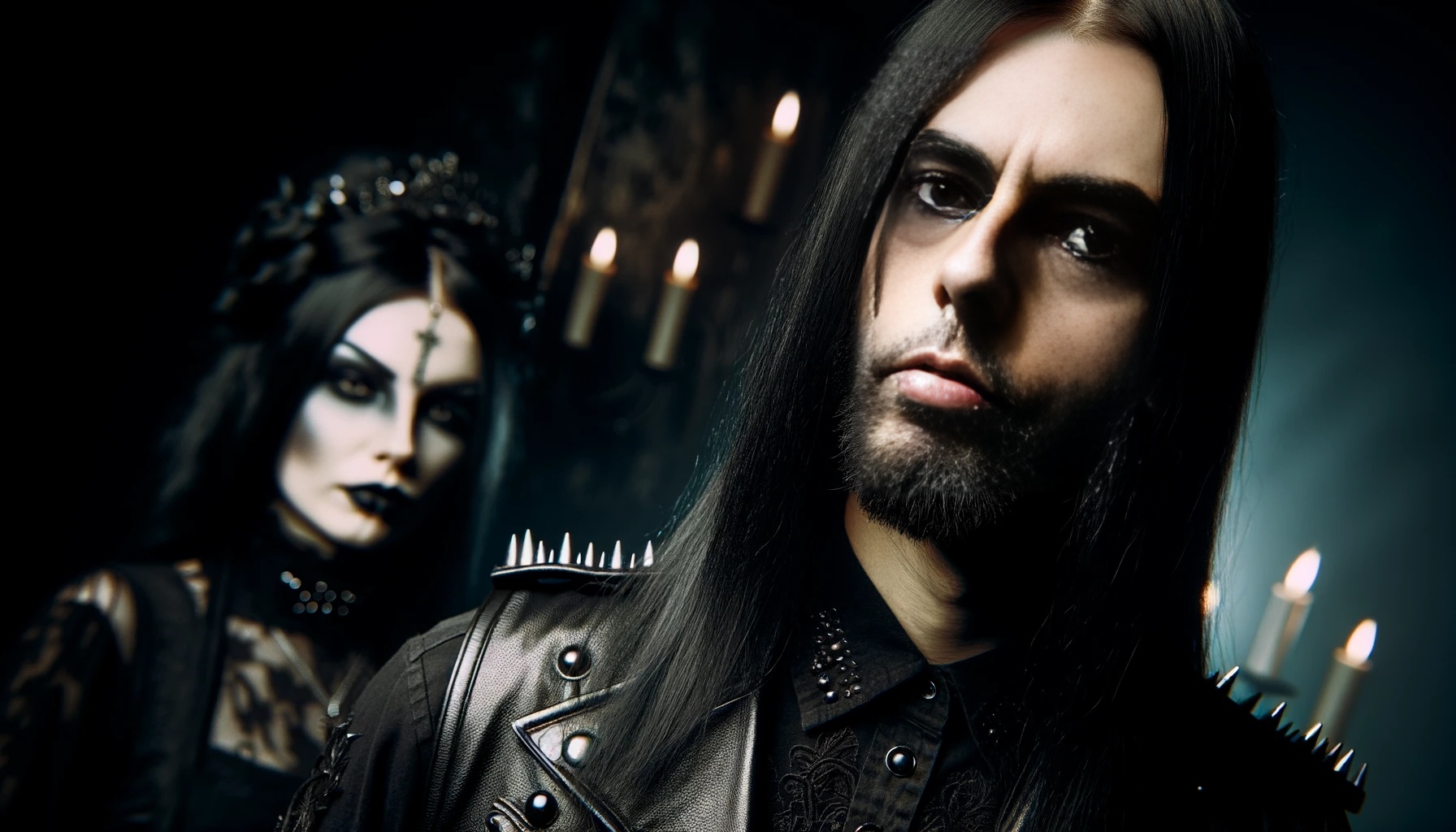The metal scene has always been a breeding ground for rebellion, controversy, and, most importantly, a deep connection to the darker aspects of existence. Within this realm, some bands have carved out a niche by fully embracing and embodying a satanic image. These bands don’t just play heavy music; they live and breathe the dark, the occult, and the blasphemous. This article delves into the rituals of darkness practiced by these bands and how they’ve cultivated a powerful and often shocking presence in the metal community.

Embracing the Dark: A Brief History
The roots of satanic imagery in metal can be traced back to the early days of the genre. Bands like Black Sabbath flirted with dark themes and occult imagery, setting the stage for future acts to take things to the next level. As the genre evolved, so did the intensity and authenticity of its satanic representation. By the time the 80s rolled around, bands were no longer content with just singing about darkness; they wanted to live it.

Black Metal: The True Essence of Satanic Imagery
Mayhem: The Pioneers of True Norwegian Black Metal
No discussion of satanic metal would be complete without mentioning Mayhem. Hailing from Norway, Mayhem is one of the most notorious bands in the black metal scene. Their commitment to satanic imagery is legendary, both in their music and their personal lives. From their infamous album covers to their chaotic live performances, Mayhem has consistently pushed the boundaries of what it means to be a satanic band.
Their debut album, De Mysteriis Dom Sathanas, is a cornerstone of black metal. The album’s creation was marred by tragedy and controversy, including the suicide of vocalist Dead and the murder of guitarist Euronymous. These events only solidified the band’s reputation for living on the edge of darkness.
Gorgoroth: A Symphony of Blasphemy
Gorgoroth is another name synonymous with satanic imagery. Known for their unrelenting brutality and theatrical live shows, Gorgoroth has never shied away from their dark beliefs. Their concerts often feature crucified models, sheep heads on stakes, and copious amounts of blood, creating a truly hellish experience for their audience.
Their album Ad Majorem Sathanas Gloriam is a testament to their dedication to satanic themes. The lyrics, written in both English and Norwegian, explore blasphemy, anti-Christian sentiments, and the glorification of Satan. Gorgoroth’s music and imagery are a full-frontal assault on the senses, designed to shock and provoke.

Death Metal: The Brutal Side of Satanic Imagery
Deicide: The Name Says It All
If there’s one band that encapsulates satanic death metal, it’s Deicide. Formed in 1987, Deicide has been a driving force in the death metal scene with their vehemently anti-Christian lyrics and imagery. Their name itself means “the killing of a god,” a clear indication of their stance on religion.
Frontman Glen Benton is notorious for his outspoken hatred of Christianity and his penchant for burning inverted crosses into his forehead. Deicide’s music is relentless and uncompromising, with albums like Once Upon the Cross and Serpents of the Light becoming staples of the genre. Their live shows are equally intense, often featuring inverted crosses and other blasphemous symbols.
Morbid Angel: The Occult Masters
Morbid Angel is another cornerstone of satanic death metal. Their music combines brutal riffs with occult themes, creating a sound that is both aggressive and mystical. Albums like Altars of Madness and Covenant are hailed as some of the greatest death metal albums of all time.
Morbid Angel’s lyrics delve deep into the occult, with references to ancient deities, rituals, and dark magic. Their use of Lovecraftian imagery and themes sets them apart from other bands in the genre, adding a layer of esoteric mysticism to their already intense sound.

Theatrics and Rituals: Bringing Darkness to Life
Watain: The Modern Purveyors of Black Metal Rituals
Swedish black metal band Watain is renowned for their ritualistic approach to music and performance. Their concerts are not just shows; they are full-fledged ceremonies dedicated to the dark arts. The band members, covered in blood and wearing corpse paint, create an atmosphere of pure evil.
Watain’s dedication to their satanic image is evident in their music and lyrics. Albums like Lawless Darkness and The Wild Hunt explore themes of death, chaos, and Satanism. The band’s commitment to authenticity has earned them a loyal following and a place among the elite in the black metal community.
Behemoth: Blurring the Lines Between Performance and Ritual
Polish extreme metal band Behemoth has risen to prominence with their blend of black and death metal, coupled with their unflinching dedication to satanic themes. Frontman Nergal’s battle with leukemia and subsequent recovery only strengthened the band’s resolve to push boundaries.
Behemoth’s live performances are theatrical and intense, often featuring elaborate stage setups and pyrotechnics. Albums like The Satanist and I Loved You at Your Darkest showcase the band’s ability to blend brutal music with profound, often blasphemous, lyrical content. Their music videos and stage performances blur the lines between art and ritual, making each show a transcendental experience for their fans.

The Impact of Satanic Imagery on the Metal Community
The use of satanic imagery in metal is not just for shock value; it serves as a powerful form of expression and rebellion. For many bands, embracing darkness is a way to challenge societal norms and confront the taboos surrounding religion and morality. This imagery allows artists to explore themes of existential dread, the human condition, and the rejection of conventional beliefs.
However, this dedication to darkness is not without its controversies. Bands that take their satanic image seriously often face backlash from religious groups, media outlets, and even governments. Despite this, the resilience and commitment of these bands have solidified their place in the annals of metal history.

The Rituals of Darkness Conclusion: The Unyielding Spirit of Darkness
The rituals of darkness practiced by these bands go beyond mere performance. They represent a profound commitment to exploring the deepest, most forbidden aspects of existence. Whether through black metal, death metal, or other extreme subgenres, these bands have forged a path that is as uncompromising as it is influential.
For fans and followers, the allure of these bands lies in their authenticity and the raw power of their music. They are not just entertainers; they are modern-day shamans, guiding their listeners through the darkest corners of the human psyche. In the end, the rituals of darkness serve as a reminder of the unyielding spirit of rebellion and the enduring power of the occult in the world of metal.
For more on the dark arts and the bands that live them, visit my home page. Stay connected with all my latest updates and musings on the dark side of life through my social media links.




